Important advances in the field of FUS have been plentiful this month—so much so that we could not pick one or two to feature. Instead, we include a roundup of recently published research on these topics:
- FUS-enhanced Doxorubicin Delivery to Glioblastomas Prolongs Survival in Mouse Models

- Essential Tremor Thalamotomy: Practices and Clinicoradiological Outcomes
- Phase Shift Nanoemulsion Ablation of Tumors
- Boiling Histotripsy in an In Vivo Setting
- FUS Treatment of Primary Hyperparathyroidism
- Cost-effectiveness of Uterine-Preserving Procedures
Study Briefs
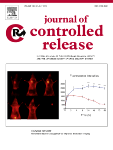 Prolonged Survival upon Ultrasound-enhanced Doxorubicin Delivery in Two Syngenic Glioblastoma Mouse Models. J Control Release 2014 May 27;187C:74-82.
Prolonged Survival upon Ultrasound-enhanced Doxorubicin Delivery in Two Syngenic Glioblastoma Mouse Models. J Control Release 2014 May 27;187C:74-82.
The blood-brain barrier (BBB) limits chemotherapy for glioblastoma multiforme (GBM), the most common and aggressive type of brain cancer. Microbubble-enhanced FUS may disrupt the BBB to allow chemotherapy drugs to cross. This study investigated the feasibility and the safety of this technique in two different models. Both models experienced a significant increase of survival and slower disease progression.
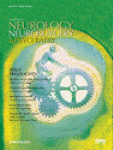 Unilateral Magnetic Resonance Guided Focused Ultrasound Thalamotomy for Essential Tremor: Practices and Clinicoradiological Outcomes. J Neurol Neurosurg Psychiatry doi:10.1136
Unilateral Magnetic Resonance Guided Focused Ultrasound Thalamotomy for Essential Tremor: Practices and Clinicoradiological Outcomes. J Neurol Neurosurg Psychiatry doi:10.1136
FUS has been developed as a less-invasive surgical tool to create brain lesions in the thalamus as a treatment for essential tremor (ET). This feasibility study showed immediate and sustained improvements in tremors 6-months post-procedure. While no patient developed significant postsurgical complications, one had mild and delayed postoperative balance, and about half of the patients had bouts of dizziness during the procedure. FUS thalamotomy is a safe, effective, and less-invasive surgical method for treating medication-refractory ET. Issues to resolve include optimal patient selection and management of patients during treatment.
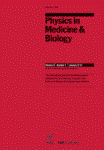 Cavitation-enhanced MR-guided Focused Ultrasound Ablation of Rabbit Tumors in vivo Using Phase Shift Nanoemulsions. Phys Med Biol 2014 Jul 7;59(13):3465-81.
Cavitation-enhanced MR-guided Focused Ultrasound Ablation of Rabbit Tumors in vivo Using Phase Shift Nanoemulsions. Phys Med Biol 2014 Jul 7;59(13):3465-81.
Inoperable tumors are often large and near critical blood vessels. FUS alone can ablate solid tumors but is limited by long treatment times and high intensities. Phase-shift nanoemulsions (PSNE) are very small droplets that can accumulate in tumors and then be vaporized by FUS into microbubbles. In this study, FUS was used on intramuscular tumors to study the effect of vaporized PSNE on FUS-induced cavitation and heating. PSNE initiated cavitation and enhanced FUS-mediated heating in tumors, indicating that PSNE could potentially reduce the time and/or acoustic intensity required for FUS treatment of tumors.
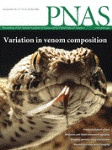 Ultrasound-guided Tissue Fractionation in In Vivo Porcine Liver Model. PNAS Published online before print May 19, 2014 doi: 10.1073/pnas.1318355111
Ultrasound-guided Tissue Fractionation in In Vivo Porcine Liver Model. PNAS Published online before print May 19, 2014 doi: 10.1073/pnas.1318355111
This study shows the first in vivo validation of boiling histotripsy (fractionation of target tissue into subcellular debris) in a large animal model. The boiling histotripsy spared adjacent structures (blood vessels) while fractionating target tissue under B-mode ultrasound monitoring. The work from this group was highlighted in our recent Focus Feature on histotripsy.
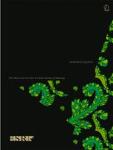 US-guided High-intensity Focused Ultrasound as a Promising Non-invasive Method for Treatment of Primary Hyperparathyroidism. Eur Radiol 2014 Jun 4.
US-guided High-intensity Focused Ultrasound as a Promising Non-invasive Method for Treatment of Primary Hyperparathyroidism. Eur Radiol 2014 Jun 4.
To study the long-term efficacy and safety of ultrasound (US)-guided FUS in patients with primary hyperparathyroidism (PHPT), this study performed FUS on patients with parathyroid adenomas. Post-treatment, parathyroid size and parathyroid hormone decreased significantly, calcium concentration reached significant reduction nine months later, and complete remission was noted in three patients. The procedure was unsuccessful in one patient. Transitory side effects were impaired vocal cord mobility and subcutaneous edema. FUS is a promising non-invasive technique for PHPT treatment for selected patients.
 Cost-effectiveness of Uterine-preserving Procedures for the Treatment of Uterine Fibroid Symptoms in the USA. J Comp Eff Res 2014 May 30:1-12.
Cost-effectiveness of Uterine-preserving Procedures for the Treatment of Uterine Fibroid Symptoms in the USA. J Comp Eff Res 2014 May 30:1-12.
This study evaluated cost–effectiveness of three uterine-sparing leiomyoma treatment options for premenopausal women. Myomectomy, FUS, and uterine artery embolization (UAE) were compared using a Markov model and calculated in terms of quality-adjusted life year (QALY) over 5 years. Direct costs and the sum of direct and indirect (productivity) costs were calculated. Myomectomy, FUS, and UAE were similarly effective in terms of QALYs gained, and all three treatments were deemed cost effective.
